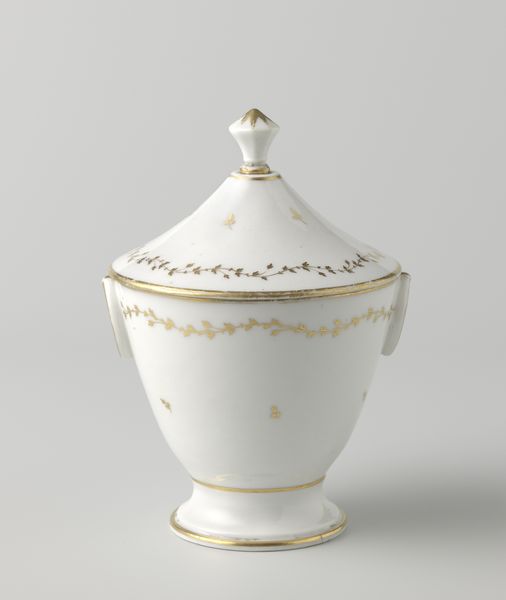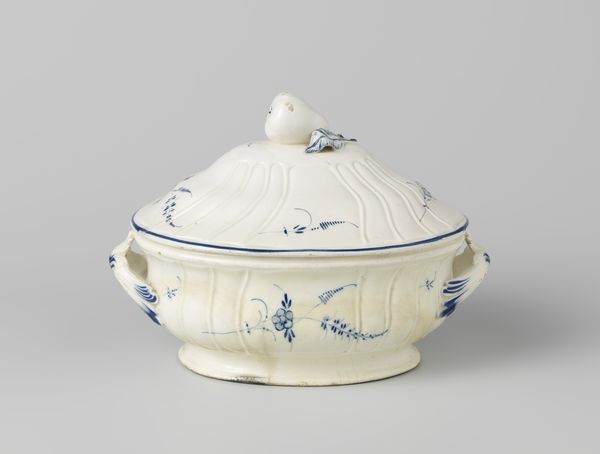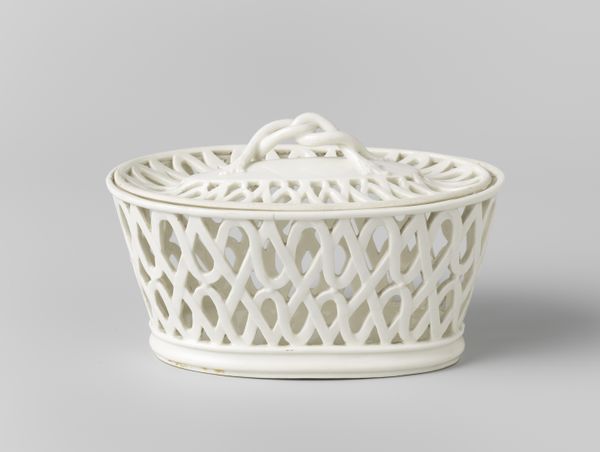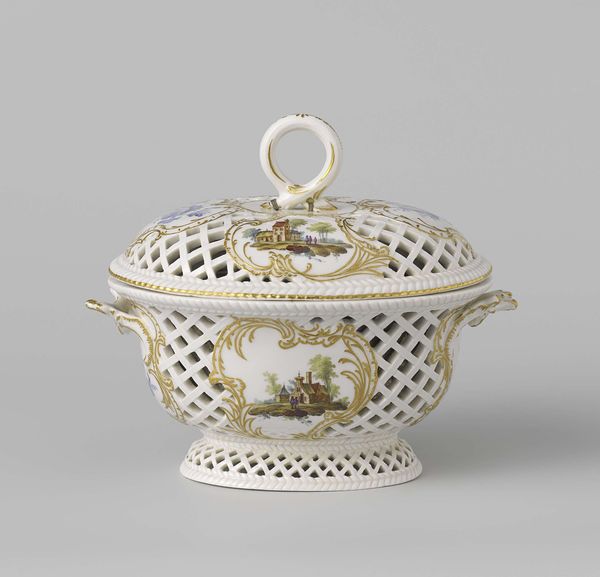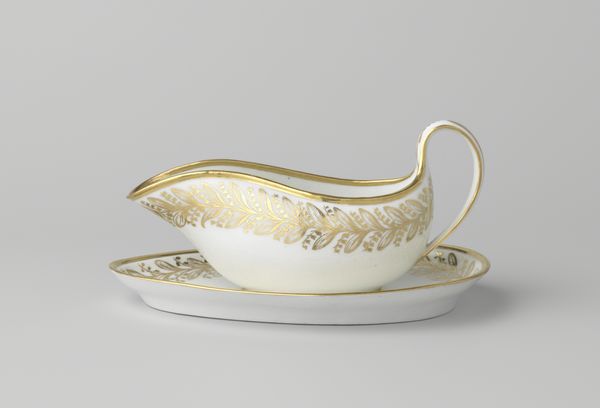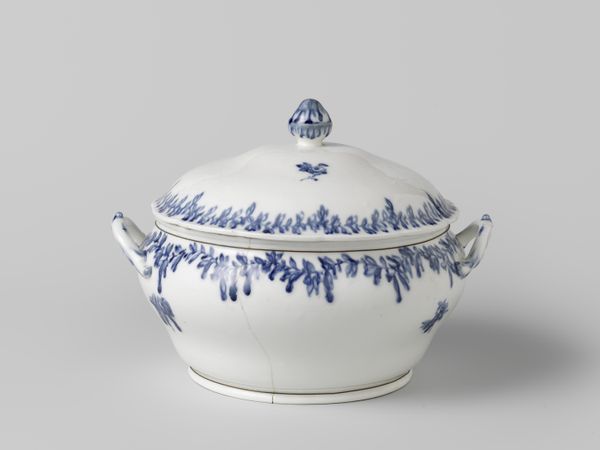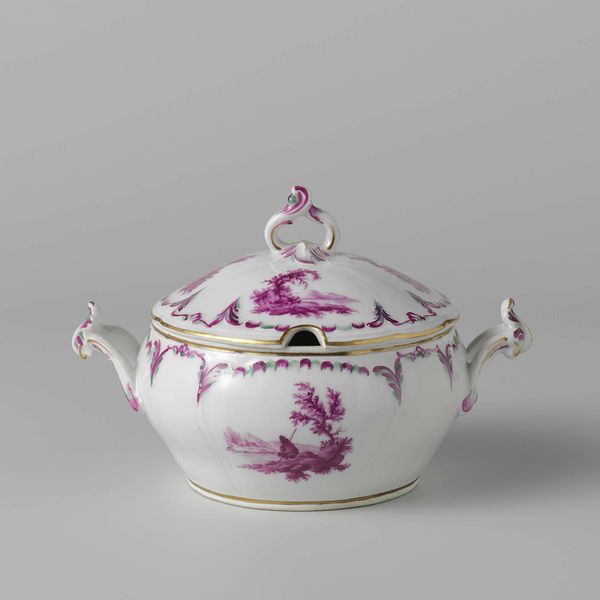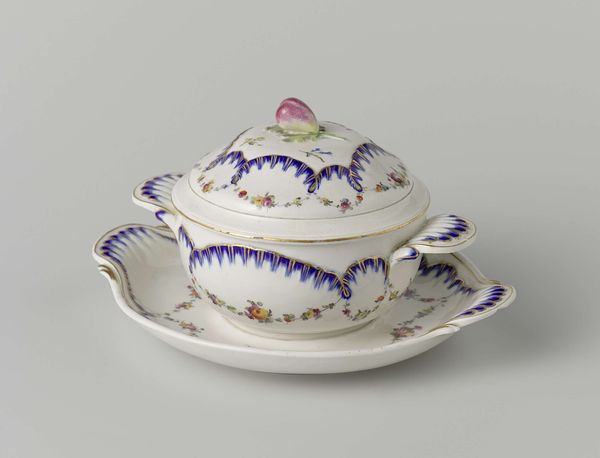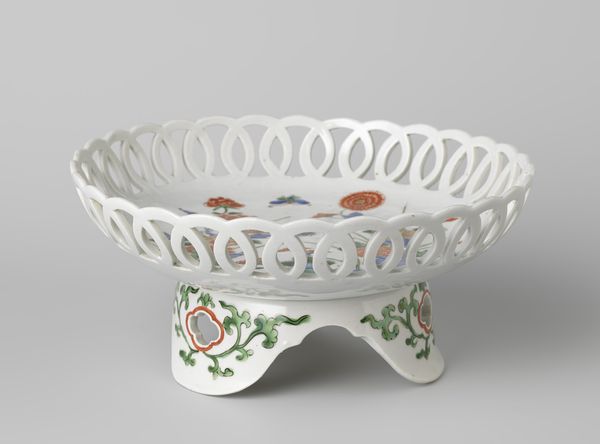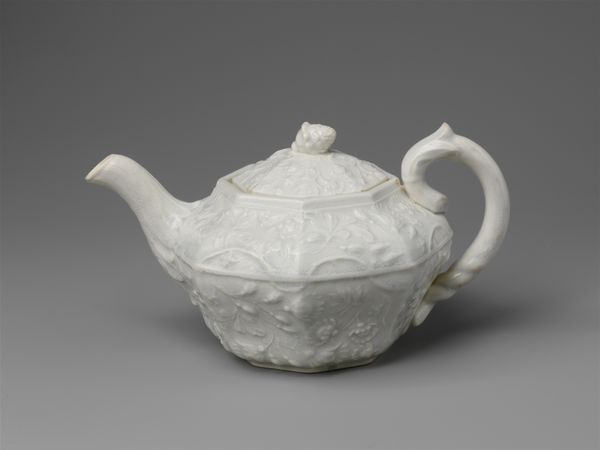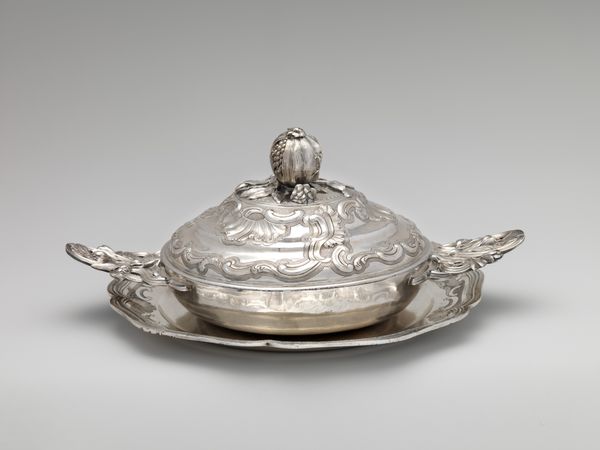
Dimensions: diameter 14 cm, height 6 cm
Copyright: Rijks Museum: Open Domain
Editor: Here we have a porcelain lid, called “Deksel,” dating from between 1774 and 1784, crafted in Loosdrecht. It's currently housed in the Rijksmuseum. The intricate lattice work gives it such a delicate, airy feel. What do you see in it? Curator: I see echoes of rituals and social customs, especially those involving hospitality and display. The pierced design isn't merely decorative; it allows scents to escape, hinting that this lid once covered something fragrant—perhaps potpourri, or spices. Can you imagine the social settings it might have graced? Editor: That’s fascinating! I hadn’t thought about scent being a part of it. The symmetry also seems quite intentional. Is there something symbolic about its shape? Curator: Indeed. The dome shape can evoke a sense of protection and containment. Porcelain itself was highly prized, representing refinement and sophistication. The symmetry speaks to a desire for order, control, and visual harmony – key Rococo ideals. Have you noticed how the light plays through the lattice? Editor: Yes, it creates really subtle patterns. Does that have significance? Curator: The interplay of light and shadow suggests illumination and enlightenment – very fashionable concepts at that time. The openwork challenges the material, transforming solid porcelain into something almost ephemeral. It's a play between substance and air, darkness and light. Editor: So it's not just a pretty object; it's packed with cultural meaning. Curator: Precisely. Every curve, every opening, reflects a world of values and beliefs. It reveals cultural memory and continuity through visual symbols, and serves to help understand emotional expression. Editor: I’ll never look at decorative art the same way again. It’s much deeper than I thought! Curator: I find the object intriguing. The cultural symbolism makes it worth considering beyond its beauty.
Comments
No comments
Be the first to comment and join the conversation on the ultimate creative platform.

